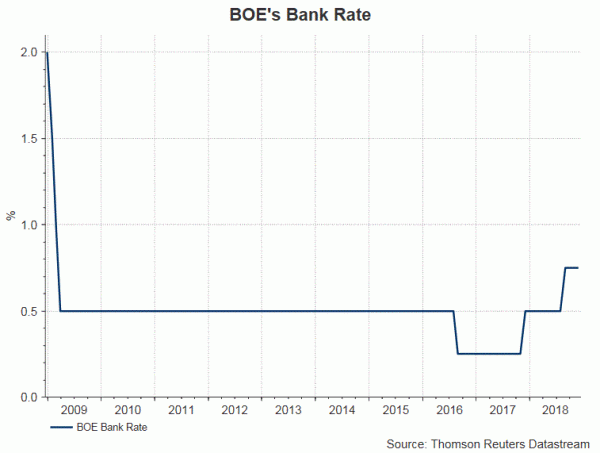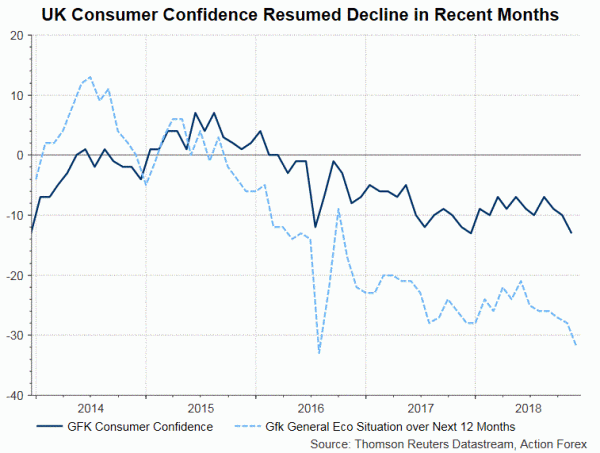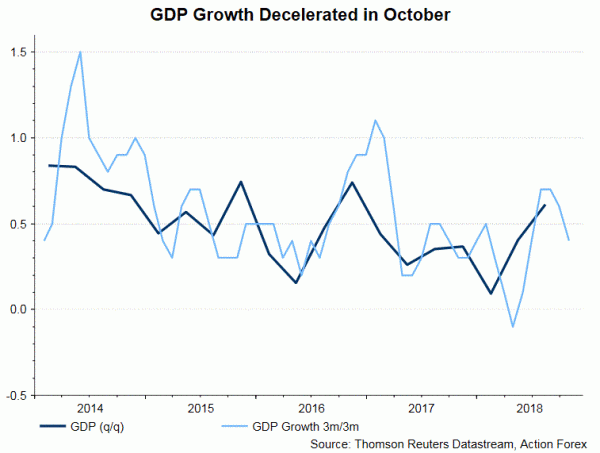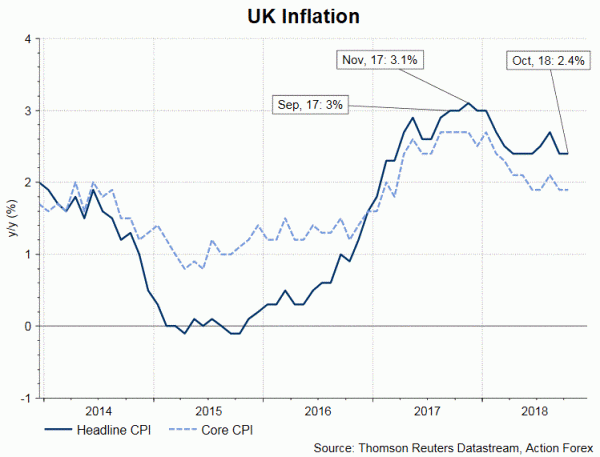At the meeting later in the week, BOE would most likely leave the Bank rate unchanged at 0.75%. It would also keep the purchases of gilts and corporate bonds remain at 435B pound and 10B pound, respectively. BOE sounded hawkish in November. Yet, given the changes in economic and political developments since the November meeting, it might have to tilt its stance on the rate hike path. While the upcoming meeting is an interim one, with no release of inflation report, the members might still convene a more cautious message in its policy statement.
Economic Developments
Retail sales failed to be boosted by festive season. Released two weeks ago, BRC retail sales contracted -0.5% y/y in November, after gaining +1.3% a month ago. AS noted in the accompanying report, “weak consumer demand and falling confidence mean that retailers are in for a nerve-wracking run up to Christmas”. Meanwhile, the retail market has been “particularly tough since the vote to leave the EU in 2016 and the current uncertainty has only compounded the challenges”. It added that “unless the UK can secure parliamentary agreement for a post-Brexit deal that ensures frictionless, tariff-free trade, consumers are likely to face higher prices and less choice”. The weak sentiment is confirmed by the latest profit warning issued by ASOS, online fashion retailers.
GDP growth steadied at +1.5% y/y in October. This came in less than consensus of a +1.6% expansion. Rolling three-month growth eased to +0.4%, from +0.6% in September. ONS attributed the slowdown to “a softening in services sector growth mainly due to a fall in car sales”. It added that “manufacturing saw no growth at all…, mainly due to a decline in the often-erratic pharmaceutical industry”.
As November’s inflation would be due a day before the BOE meeting, the market expects the headline reading to have moderated to +2.3% from +2.4%. Yet the market expectations on the country’s inflation is at 5-year high. According to the quarterly Inflation Attitudes Survey by BOE/ TNS, median inflation expectations rose to +3.2% for 2019, from +3% projected in August. The +3.2% expectation was just shy of the +3.6% forecast made in November 2013.
Brexit
BOE forecasts inflation could hit +6.5%, in the case of no-deal disorderly Brexit. Governor Mark Carney has also suggested that food prices could soar as much as +10% if a no-deal Brexit brings upon -25% depreciation in sterling. While identifying a no-deal Brexit as the major risk to the monetary policy decision, BOE’s economic projections, hence policy stance, have hinged on the assumption of a smooth Brexit. At the November meeting, BOE reiterated the “gradual and limited” monetary stance. It noted that more rate hikes might be needed as there could be overheating in the economy in 2H19, adding that rate hikes could materialise amidst smooth Brexit.
The progress of Brexit, as well as the political crisis associated with it, has sent sterling to lowest levels in more than a year. Notwithstanding the survival of the no-confidence vote, PM Theresa May is yet to be relieved. The postponement of parliamentary vote on the Withdrawal Agreement has evidenced that the hurdle to get the deal passed is substantially high. Our base case remains Brexit with a deal: While the EU has refused to have further negotiation on the Withdrawal Agreement, it might be willing to make some cosmetic changes on the terms so that they would be more easily accepted by the MPs in the UK. However, these probably would not be concluded at least until January next year. BOE has every reason to feel less confident about its “smooth Brexit” assumption at the December meeting. We believe it is prudent for the members to add a cautious tone to the outlook.

















